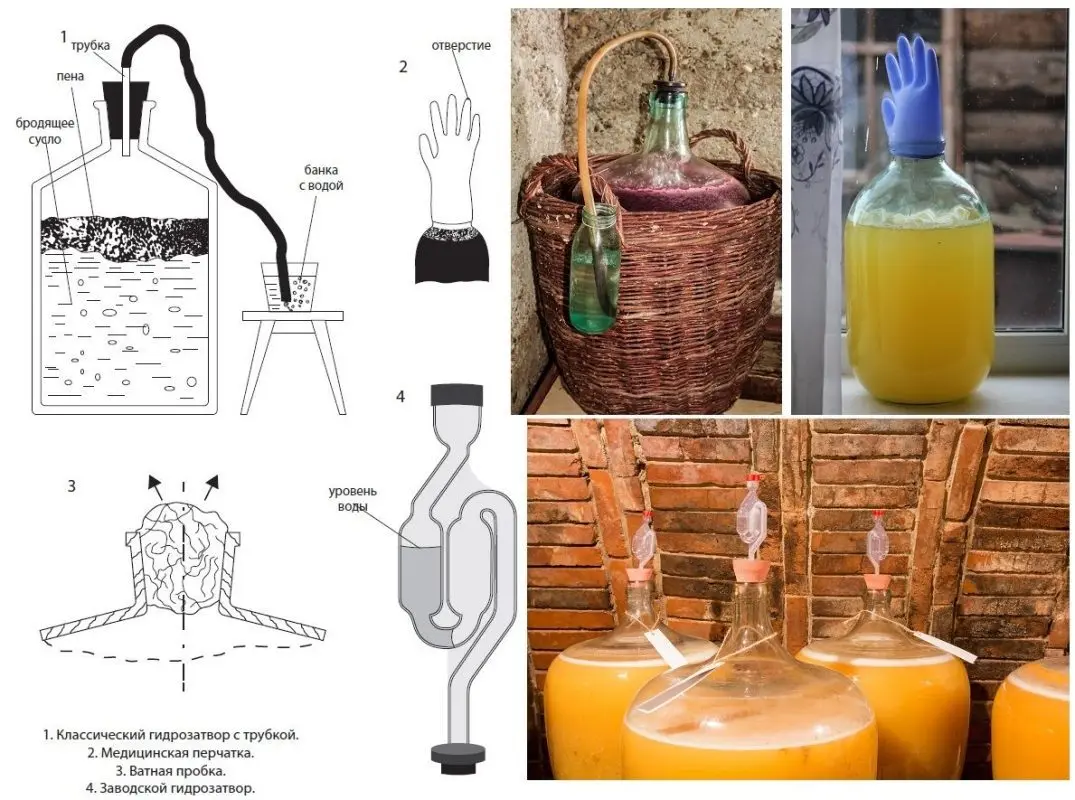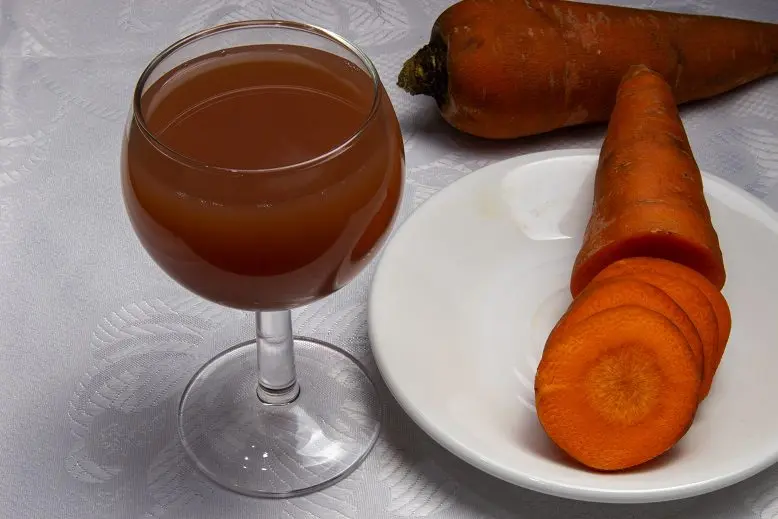Light alcohol with a characteristic carrot aroma and subtle notes of citrus (if you add lemon juice and orange). Like other vegetable wines, the taste is specific, for an amateur, but it’s worth a try at least once.
To make wine, ripe and juicy carrots are required without rotten, spoiled and moldy parts. When storing for a long time, you need to check if the vegetables have a characteristic earthy or musty smell that will be transferred to the wine.
To prevent infection with pathogenic microorganisms, before starting cooking, all tools and containers used must be sterilized with boiling water, then wiped dry.
Ingredients:
- carrots – 3.5 kg;
- water – 6 liters;
- lemon – 1 piece or 6-7 grams of citric acid per 1 liter of must;
- sugar – 250 grams per 1 liter of wort;
- orange – 1 piece (optional);
- homemade raisin sourdough or wine yeast – for 8 liters of must.
Lemon juice or acid is needed to stabilize the acidity of the must, otherwise the fermentation of carrot wine will be weak and the taste slurred. Lemon juice is preferred as it enhances the flavor. Orange enriches the taste with light citrus tones.
Attention! If, instead of sourdough or wine yeast, you add ordinary dry or bakery yeast, then instead of wine you get mash with characteristic alcohol tones and a sharp taste.
carrot wine recipe
1. If there is no wine yeast, for 4-5 days of working with carrots, make a starter from unwashed raisins or fresh berries. Sourdough is activated “wild” wine yeast that is found on the surface of the fruit.
2. Wash and peel the carrots, grate on the smallest grater. If you leave the peel, bitterness may appear.
3. Put the resulting pulp into a saucepan, pour boiling water over it, mix and cover with a lid. Leave for a day.
4. Filter the carrot must through cheesecloth. Press the cake to dryness (no longer needed).
5. In the liquid part, add 150 grams of sugar per 1 liter of juice, all the required citric acid or juice of squeezed lemons, orange juice. Add starter (without berries) or wine yeast activated according to the instructions on the bag. Mix.
6. Pour the wort into the fermentation vessel, filling no more than 75% of the volume, so that there is room for new portions of sugar, carbon dioxide and foam. Install a water seal of any design on the neck (you can use a medical glove with a pierced hole in one of the fingers).

7. Move the container to a dark room with a stable temperature of 18-28 °C. Leave until the end of fermentation.
5 days after installing the water seal, add the next portion of sugar – 50 grams per 1 liter. To do this, drain approximately 50% of the juice from the added sugar into a separate container, for example, if you need to add 3 kg, then 1.5 liters of juice is required. Dilute the sugar in the juice, pour the resulting syrup back into the fermentation tank and close it again with a water seal.
After another 5 days, add the remaining sugar (50 grams per 1 liter) according to the described technology.
Depending on the temperature and yeast, carrot wine ferments for 30-60 days, then the water seal stops releasing gas (the glove deflates), a layer of sediment appears at the bottom, and the wine itself becomes noticeably lighter.
If fermentation does not stop 55 days after adding the first portion of sugar, you need to drain the wine from the sediment through a tube into another container, then put it under a water seal to ferment at the same temperature, otherwise bitterness may appear.
8. Remove the fermented young wine from the sediment by pouring it through a straw. Taste the drink. If desired, additionally sweeten with sugar and (or) fix with alcohol (vodka) in an amount of 2-15% of the volume. Fixing promotes long-term storage, but hardens the taste.
9. Pour the wine into aging containers, making sure to fill up to the neck to minimize contact with air. Seal tightly (if sugar was added, keep under a water seal for the first 7-10 days).
10. Transfer the carrot wine for aging to a refrigerator or cellar with a temperature of 6-16 °C. Leave at least 5-6 months (preferably 8-9).
11. When a sediment 3-5 cm thick appears, filter the drink by pouring without touching the sediment at the bottom. Usually 3-4 filtrations are required.
12. Wine is considered ready when the sediment does not appear for more than a month. The drink can be bottled and hermetically sealed with corks. Shelf life in the basement or refrigerator – up to 3 years. Fortress – 11-14%.










